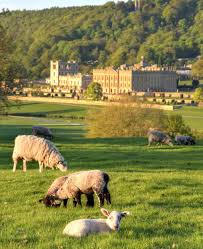Discovering Chatsworth House: A Jewel of Derbyshire

Introduction
Chatsworth House, located in the heart of Derbyshire, is one of the UK’s most iconic stately homes. The estate, known for its stunning architecture, spectacular gardens, and rich history, attracts visitors from around the world. With its roots dating back to the 16th century, Chatsworth has become synonymous with British heritage and culture, making it a significant landmark for both local and international visitors.
The Rich History of Chatsworth
Originally built in 1549, Chatsworth has been the seat of the Duke and Duchess of Devonshire for generations. The house is famed for its connection to the Cavendish family, who have played a prominent role in British history. The current house was constructed in the 17th century and features a blend of architectural styles including Elizabethan, Baroque, and Neoclassical elements. The estate is not just an architectural masterpiece; it has also been a setting for important historical events, including political gatherings and art exhibitions.
Art and Gardens
One of the most captivating features of Chatsworth is its extensive art collection. The house is home to a remarkable array of paintings, sculptures, and decorative arts, with works by renowned artists such as Rembrandt, Vermeer, and Van Dyck. Visitors are invited to explore the lavishly decorated rooms, each telling a part of the story of the generations that have lived there.
The gardens surrounding the house are equally impressive. Designed in the 18th century, they include a variety of landscapes, fountains, and sculptures. The famous Emperor Fountain, which shoots water 90 feet into the air, is a highlight of the gardens. Recent conservation efforts have revitalised these spaces, ensuring their beauty for future generations and enhancing the visitor experience.
Recent Events and Future Prospects
In recent months, Chatsworth House has adapted to the ongoing challenges posed by the COVID-19 pandemic. Emphasis has been placed on creating a safe yet engaging environment for guests. New outdoor activities, including guided garden tours and workshops focusing on sustainable gardening practices, have been introduced. Additionally, the estate continues to promote various exhibitions, showcasing contemporary artists and themed displays that highlight the house’s rich artistic heritage.
Conclusion
Chatsworth House stands as a testament to British history, art, and culture. As it continues to evolve under the stewardship of the Cavendish family, it remains a vital part of the Derbyshire landscape, offering a glimpse into the past while embracing the future. For anyone interested in English heritage, a visit to Chatsworth is a must. As tourism begins to recover, forecasts suggest an increase in visitor numbers, reaffirming Chatsworth’s status as a key player in the region’s cultural tourism.









